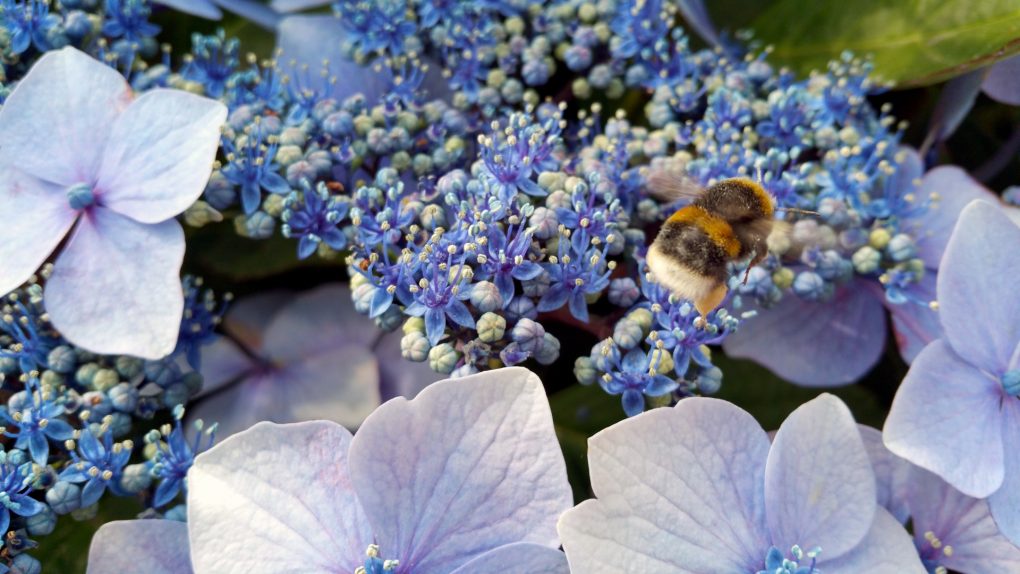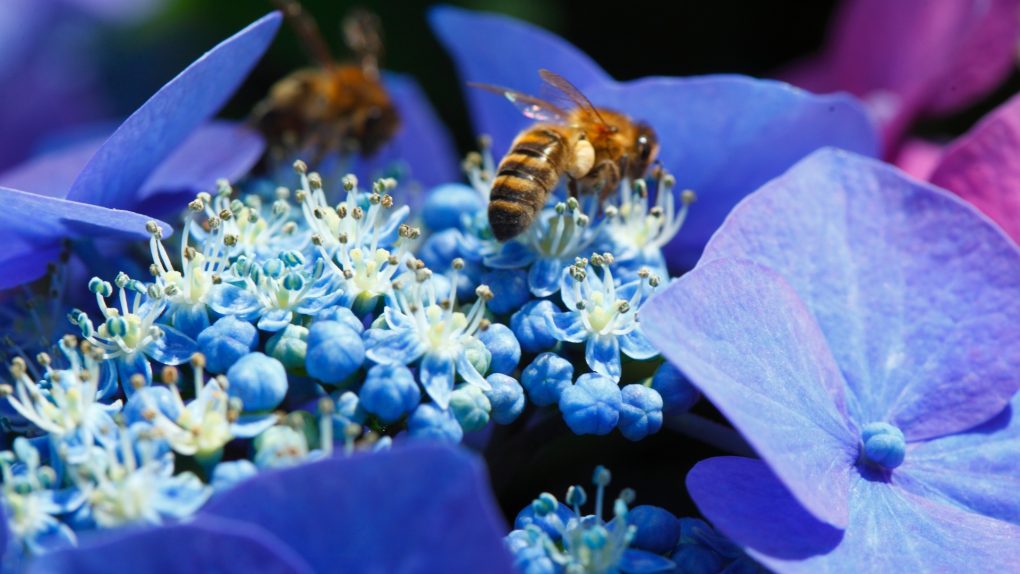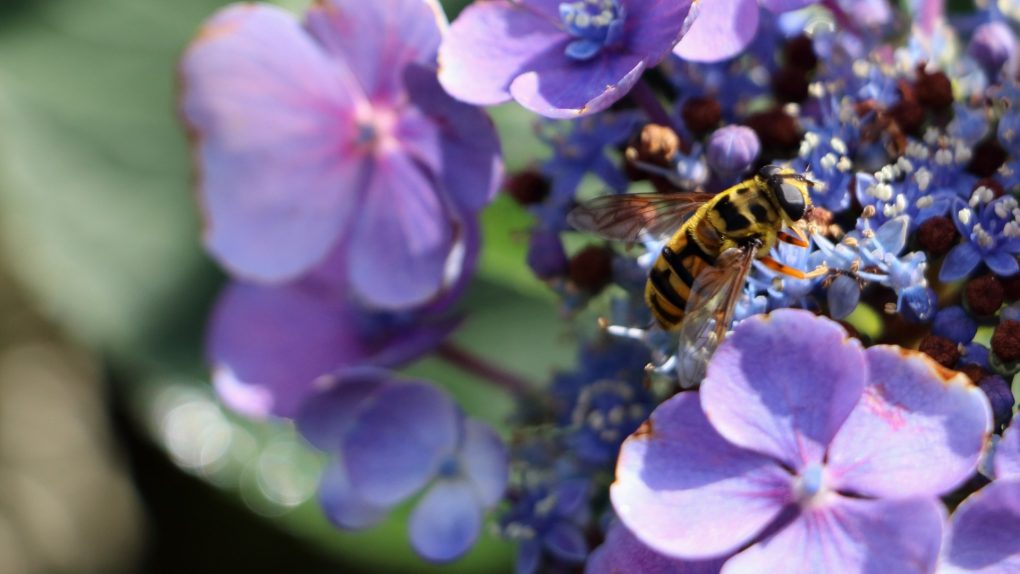Do Hydrangeas Attract Bees? The Truth About This Popular Garden Flower
Hydrangeas are a popular garden shrub known for their large, showy blooms. However, many gardeners wonder if planting hydrangeas will attract bees to their yard. While some varieties of hydrangeas can attract bees and other pollinators, not all do. Certain factors, such as the amount of pollen and nectar produced by the flowers, can determine whether or not bees will be attracted to a particular hydrangea plant.

Hydrangeas attract bees. These flowering plants produce large, showy blossoms rich in nectar and pollen, making them an enticing food source for pollinators, including bees. Bees are attracted to the vibrant colors and sweet aroma of hydrangea flowers to obtain nourishment, which in turn aids in pollination, essential for the plant’s reproduction and genetic diversity.
Table of Contents
Why are Bees Important?
Bees are important pollinators that play a crucial role in maintaining the balance of our ecosystem. They pollinate one-third of the world’s crops, including fruits, vegetables, and nuts. With bees, many foods we eat would be available, and the cost of producing these foods would increase significantly.
In addition to pollinating crops, bees also contribute to the production of honey and beeswax, which have numerous uses in food, cosmetics, and medicine. Honey is a natural sweetener that is healthier than processed sugar, and beeswax is used in skincare products and candles.
Bees are also an important indicator of the health of our environment. Their decline in recent years has been linked to the use of pesticides, habitat loss, and climate change. By protecting bees and their habitats, we can help ensure our environment’s health and the sustainability of our food supply.
To summarize, bees are important pollinators that play a crucial role in maintaining the balance of our ecosystem. They contribute to the production of honey and beeswax, and their decline is an indicator of the health of our environment. Protecting bees and their habitats is essential to ensure the sustainability of our food supply and the health of our planet.
Factors that Affect Bee Attraction
The main factor affecting bee attraction is the amount of nectar and pollen the hydrangea flowers produce. Bees are attracted to flowers with a high amount of nectar and pollen, as these are important food sources for them. Hydrangeas that produce a lot of nectar and pollen will attract more bees than those that produce less.
Another factor that can affect bee attraction is the color of the flowers. Bees are attracted to blue, purple, and yellow flowers, as these colors are more visible to them. Hydrangeas with blue or purple flowers will attract more bees than those with pink or white flowers.

Types of Hydrangeas that Attract Bees
While all hydrangeas can attract bees somewhat, certain types are more attractive to bees than others.
- Bigleaf Hydrangea: This hydrangea produces large, showy flowers rich in nectar and pollen, and are particularly attracted to the blue and purple varieties of this hydrangea.
- Oakleaf Hydrangea: This type of hydrangea produces cone-shaped flowers rich in nectar and pollen, and are attracted to the white and pink varieties of this hydrangea.
- Panicle Hydrangea: This hydrangea produces cone-shaped flowers rich in nectar and pollen. Bees are particularly attracted to the white and pink varieties of this hydrangea.
- Smooth Hydrangea: This type of hydrangea produces flat-topped flowers that are not fragrant and do not produce much nectar. While they do not attract bees as much as other hydrangeas, they can still attract pollinators such as butterflies and hummingbirds.
In conclusion, hydrangeas can be a great choice if you’re looking to attract bees to your garden. While all hydrangeas can attract bees to some degree, those that produce a lot of nectar and pollen and have blue or purple flowers are the most attractive to bees.
Benefits of Bees on Hydrangeas
Hydrangeas are beautiful flowering plants that come in various colors and sizes. They are a favorite among gardeners and homeowners alike. Bees play an important role in the growth and development of hydrangeas. In this section, we will explore the benefits of bees on hydrangeas.
Pollination
Bees are essential for pollinating hydrangeas. When bees visit hydrangea flowers, they transfer pollen from the male part of the flower (anther) to the female part (stigma). This process leads to fertilization and the formation of seeds. Without bees, hydrangeas would not be able to reproduce.
Fertilization
Bees not only help with pollination but also with fertilization. When bees visit hydrangea flowers, they collect nectar and pollen. The nectar provides bees with energy, while pollen is a source of protein. By moving from flower to flower, bees transfer pollen from one plant to another, resulting in cross-fertilization. This process helps to increase genetic diversity and leads to healthier plants.
Other Benefits
Bees are not the only pollinators of hydrangeas, but they are the most efficient. Other insects such as butterflies and moths can also pollinate hydrangeas, but they are less effective than bees. Bees are also attracted to the sweet fragrance of hydrangea flowers, making them a great addition to any garden.
Bees play a crucial role in the growth and development of hydrangeas. They help with pollination and fertilization, leading to healthier plants and increased genetic diversity. In addition, gardeners and homeowners can attract bees to their gardens by planting various flowers, including hydrangeas.

How to Encourage Bee Activity on Hydrangeas
Hydrangeas are beautiful flowering shrubs that can add color and texture to any garden. While some hydrangeas naturally attract bees and other pollinators, others may need some help to encourage bee activity. Here are some tips to help attract bees to your hydrangeas.
Planting Companion Plants
One way to encourage bee activity on hydrangeas is by planting companion plants that attract bees. Some great options include:
- Lavender
- Sage
- Thyme
- Bee balm
- Coneflowers
These plants attract bees and add beauty and fragrance to your garden. You can help attract more bees to your garden by planting these companion plants near your hydrangeas.
Providing Water Sources
Another way to encourage bee activity on hydrangeas is by providing water sources. Bees need water to survive, and by providing a water source in your garden, you can help attract more bees to your hydrangeas. Some options include:
- Birdbaths
- Dishes filled with water
- Small ponds or fountains
Make sure to change the water regularly to keep it clean and fresh for the bees.
By planting companion plants and providing water sources, you can help attract more bees to your hydrangeas and encourage better pollination. As a result, your garden will be healthier and more vibrant.
